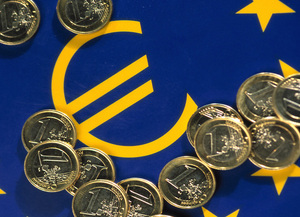 On the eve of the Copenhagen Summit, the EU’s attempts to portray themselves as leading the international effort to reduce carbon dioxide have been shown to be completely hypocritical by a new report.
On the eve of the Copenhagen Summit, the EU’s attempts to portray themselves as leading the international effort to reduce carbon dioxide have been shown to be completely hypocritical by a new report.
Despite the promises by the EU’s politicians to lead on climate change, the EU’s own bank continues to invest heavily in fossil fuels, according to the report “Change the Lending not the Climate”.
The CEE Bankwatch Network has found that 70 per cent of all energy loans by the Bank were for fossil fuels in the period 2002 to 2008, whilst renewables accounted for only 22 per cent.
During the same period, nearly half the energy portfolio of the EIB was in oil, gas and coal.
The Bank is doing far too little, far too late for renewable energy. Last year it loaned 1 billion to renewable energy projects, but that has to be seen in the context of the estimated EUR 40 billion that is needed to meet the EU’s 2020 targets.
In developing countries, the EIB’s story is worse. The EIB’s lending has been even less sustainable than inside the EU. During the same time period, 93 per cent of the money the Bank lent to the Global South went to oil, gas, large hydro and electricity generation.
These figures are highly important because the EIB is now the largest public lending institution in the world, in terms of load volumes, lending double what the World Bank does to the energy sector.
They are also important in other ways. Over 50 per cent of the EIB energy generation lending from 2002 to 2008 was in gas and LNG. Whilst gas is certainly cleaner than oil, LNG could not be, due it the energy involved in the life-cycle to cool, ship and transport the gas.
As the report alleges: “Some of the EIB lending is clearly designed to improve the diversity of natural gas supply for the EU, in particular, through the construction of infrastructure for liquid natural gas (LNG), which can be transported by tankers from around the world.”
It continues: “Though, recent studies show that the life cycle carbon footprint of LNG is much higher than natural gas transported by pipelines. The additional energy needed for natural gas liquidification, transport and gasification makes LNG‘s climate impact close to that of coal”.
And we all know that coal is the dirtiest of the lot.
Katerina Husova, Climate coordinator at Bankwatch and co-author of the report, said: “Our analysis presents a stark picture of EIB energy lending from 2002 up to the end of last year. On average since 2002, for every million spent on renewables, the EIB has provided 3.3 million to oil, gas, coal, nuclear or large hydro.”
She adds “This massive ongoing support for fossil fuels and unsustainable energy sources from the pockets of EU taxpayers seriously hampers EU efforts at the global climate negotiations in Copenhagen. While the EU attempts to position itself as a climate leader, it has not yet been able to present a credible position on taking sharp and rapid domestic cuts in GHG emissions.”
So if anyone is going to Copenhagen you might just want to go to the EIB event on Monday, 14th December entitled “EIB: Responding to the challenges of climate change” which will present “EIB work on climate change and the different financing tools applied”.
So tell the EIB that for the EU to be seen as real climate leaders, it needs to put its money where its mouth it. And that is investing in clean energy.

To view a video clip with the report’s authors suggesting specific ways for the EIB to support EU climate efforts and targets go to http://www.fossilfreeeib.org
There you can also write to EIB President Philippe Maystadt and suggest that it’s really about time for the EIB to get real when it comes to climate change.